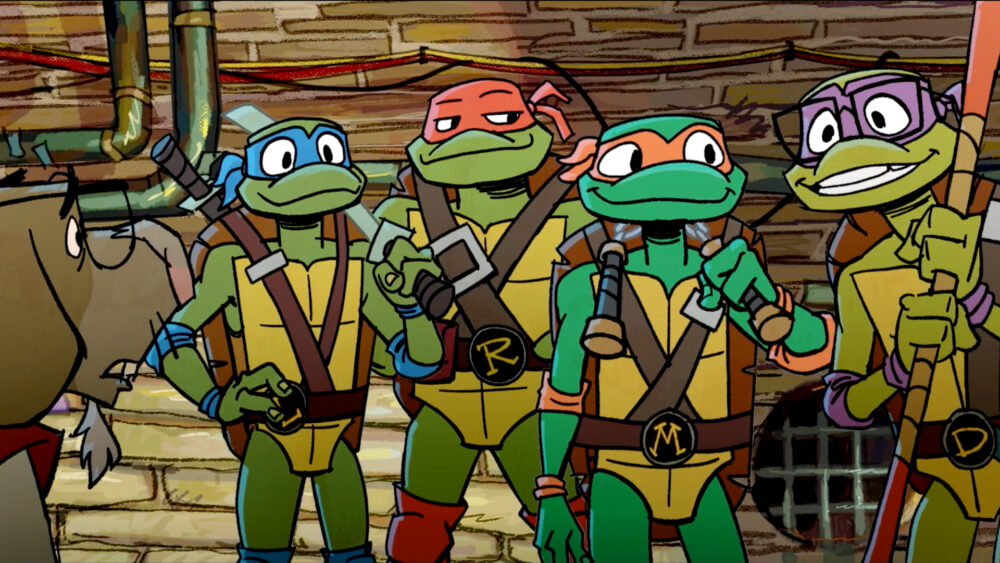According to Maui in Moana, “you wear a dress and have an animal sidekick; you’re a princess.” The argument around a generic stereotype depicting Disney princesses has become so pervasive, it has even made its way in a few of the films. Disney enthusiasts, who have followed and studied the 80-year legacy of Disney Princess films, have watched it transform from frivolous flights of fancy only suitable for young girls, to progressive representations of heroines who are confident, curious, and courageous. The evolution of these films has charted a growth in female heroes.
The progression of these royals is broken into three waves, “Classic”, “Renaissance” and “Modern”. Although Disney has attempted to participate in the debate by creating criteria, including having royal lineage (marriage counts), being the primary character in their movie, and being human, they have even deviated from these ground rules. In the end, what truly creates a franchised Disney Princess is if the character has a crowing ceremony at the park. The most recent was Merida in 2013, becoming the 11th official Disney princess.
The Classic Era
The earliest Disney princesses, Snow White, Cinderella, and Aurora, could only be described as products of their time. The first feature-length film for the company, Snow White and the Seven Dwarfs, depicted a young girl (she’s 13 years old in the movie) pining for a prince and turning into a housekeeper for seven grown men (even if they were dwarfs). When matching the story to the time it was created, it predated woman joining the workforce during World War II. Many also emphasized how the character was not fleshed-out because the filmmakers were focusing on the enormous feat of developing a feature-length film.
The next two to arrive on the scene, Cinderella and Aurora, enhanced the convention of damsel in distress. Sleeping Beauty, which is the epitome of this narrative, features Aurora with only 18 lines of dialogue in an hour long movie. In Cinderella, audiences are introduced to a woman who is only able to escape an awful family if she is wed. All three women, products of their circumstance, are not the champions of their own story, do not aid in the defeat of their villain, and continue a female narrative surrounding innocent and helplessness.
The Renaissance Era
After more than 20 years without a princess film, the company began to look to its roots and a new generation of princess was introduced: Ariel, Belle, and Pocahontas. The Little Mermaid provided audiences with a female protagonist who was the first in the legacy to have her own personal independence. She is curious, defiant, and willful, all strengths that then became her downfall. Ariel spends a majority of her movie unable to speak, which causes her to rely on appearance to achieve her goals. As usual, the villain is defeated by a prince.
The next two films, Beauty and the Beast and Pocahontas, make huge strides both in creating independence of their heroines. Belle and Pocahontas embodied independent thinkers who fought against traditional expectations. Although her name means beauty, Belle fought against gender norms by having a thirst for reading, and dreaming about adventure. Despite the many historical inaccuracies, Pocahontas fought against the cultural norm of arranged marriage. Both, however, cannot escape the love-story arc that continues to plague the movies.
The Modern Era
As the franchise begins to grow, the new themes adapted into films include princess actively attempt to rescue a meaningful character or redeem the villain, increasing the plot for both protagonists and antagonist. Tiana, in Princess and the Frog, attempts to save the prince, Naveen from an eternity as an amphibian. The 3D animated Tangled found a Rapunzel choosing to sacrifice her own freedom to save Flynn. Then as the scene escalates, the villain, Mother Gothel, is pushed out a window and Repunzel attempts to save her. This marks the first time a Disney Princess has tried to rescue a villain.
As the Modern Age Disney Princess stories develop, writers have started to overthrow the usual romance. Frozen, which focuses on the bond between sisters, even pokes fun at the love-at-first-sight theme in prior movies, with Hans declaring, “You can’t just marry a man you just met!” This film’s climax even differs from its predecessors; instead of a battle scene with a baddy, Anna sacrifices herself to save her sister and the kingdom. Lastly, there is the Pixar Disney movie, Brave, which features no love interest. Although the plot focuses on Merida defying her family to avoid taking a husband, she is not partnered in the end of the movie.
The Future
The culmination of “what is a princess” has started with frilly dresses and has transformed to courage and spirit in Moana. The story focuses on a defiant young girl on a mission to save her people. With the ability to see past the façade of fear around her, she helps liberate Te Fiti, whom transformed from a monstrous volcano to an Earth goddess. This movie has no romantic subplot, no prince that saves the day, and challenges the heroine to think critically, act resourcefully, all with compromise and understanding. It appears that the future of the Princess franchise is teaching the next generation that they don’t need to “wait for their prince to come”, but instead can to face their dragons themselves with real heart and compassion.

Events
Paramount+ Reveals Official Main Title Sequence for the Upcoming Series TALES OF THE TEENAGE MUTANT NINJA TURTLES

During the TALES OF THE TEENAGE MUTANT NINJA TURTLES panel earlier today at San Diego Comic Con, Paramount+ revealed the official main title sequence for the series. The sequence is composed by EMMY® nominee, Matt Mahaffey, known for his work on Sanjay and Craig, Rise of the Teenage Mutant Ninja Turtles, and Rise of the Teenage Mutant Ninja Turtles: The Movie and much more.
From the studios of the Mutant Mayhem film, the all-new Paramount+ original series TALES OF THE TEENAGE MUTANT NINJA TURTLES explores the adventures of everyone’s favorite pizza-loving heroes as they emerge from the sewers onto the streets of NYC. Leo, Raph, Donnie and Mikey are faced with new threats and team up with old allies to survive both teenage life and villains lurking in the shadows of the Big Apple. The series is produced by Nickelodeon Animation and Point Grey Pictures.
TALES OF THE TEENAGE MUTANT NINJA TURTLES is executive produced by Chris Yost (The Mandalorian, Thor: Ragnarok) and Alan Wan (Blue Eye Samurai, Rise of the Teenage Mutant Ninja Turtles, Teenage Mutant Ninja Turtles [2012 Series]). Production is overseen for Nickelodeon by Claudia Spinelli, Senior Vice President, TV Series Animation, Nickelodeon, and Nikki Price, Director of Development and Executive in Charge of Production.
In addition to the upcoming new series, stream all things Turtles on Paramount+.
Events
Comic-Con 2024: Those About to Die Activation
Events
DISNEY+ CASTS DANIEL DIEMER AS FAN-FAVORITE ‘TYSON’IN SEASON TWO OF “PERCY JACKSON AND THE OLYMPIANS”

in Hall H at San Diego Comic-Con, Rick Riordan and Disney+ revealed that Daniel Diemer (“Under the Bridge”) will star as fan-favorite cyclops “Tyson” in the epic adventure series “Percy Jackson and the Olympians.” Diemer joins Walker Scobell (Percy Jackson), Leah Sava Jeffries (Annabeth Chase) and Aryan Simhadri (Grover Underwood) as a series regular. The Disney+ Original series from Disney Branded Television and 20th Television will start filming its second season next week in Vancouver.
Season two of “Percy Jackson and the Olympians” is based on the second installment of Disney Hyperion’s best-selling book series titled “The Sea of Monsters” by award-winning author Rick Riordan. In the new season, Percy Jackson returns to Camp Half-Blood one year later to find his world turned upside down. His friendship with Annabeth is changing, he learns he has a cyclops for a brother, Grover has gone missing, and camp is under siege from the forces of Kronos. Percy’s journey to set things right will take him off the map and into the deadly Sea of Monsters, where a secret fate awaits the son of Poseidon.
Diemer stars as Tyson – a young Cyclops who grew up all alone on the streets, and finds it difficult to survive in the human world. Shy and awkward, with a heart almost as big as he is, Tyson soon discovers that Poseidon is his father, which means Percy Jackson is his half-brother… and that Tyson may have finally found a home.
Diemer recently starred in the Hulu limited series “Under the Bridge” based off the critically acclaimed book of the same name and a tragic true story of a missing teen girl in Vancouver in 1997. He will next star in the indie “Thug” opposite Liam Neeson and Ron Perlman for director Hans Petter Moland. Daniel was recently seen as the lead in the indie “Supercell” opposite Alec Baldwin and Skeet Ulrich and the lead in the film “Little Brother” opposite Phil Ettinger and JK Simmons. Daniel can also be seen in the Netflix series “The Midnight Club” and recently starred as the male lead in the breakout hit Netflix feature “The Half Of It” from producer Anthony Bregman and director Alice Wu. He is a graduate of Victoria Academy of Dramatic Arts in Vancouver.
Created by Rick Riordan and Jonathan E. Steinberg, season two of “Percy Jackson and the Olympians” is executive produced by Steinberg and Dan Shotz alongside Rick Riordan, Rebecca Riordan, Craig Silverstein, The Gotham Group’s Ellen Goldsmith-Vein, Bert Salke, The Gotham Group’s Jeremy Bell and D.J. Goldberg, James Bobin, Jim Rowe, Albert Kim, Jason Ensler and Sarah Watson.
The first season of “Percy Jackson and the Olympians” is available on Disney+
-

 Interviews1 day ago
Interviews1 day agoInterview With Heroes & Villains Creative Director Doug Johnson
-

 Streaming1 day ago
Streaming1 day agoApple TV+ announces season two for delightful kids and family series “Camp Snoopy
-

 Events1 day ago
Events1 day agoThat’s My E Coverage Of The Adult Swim’s Pirate Parrrty
-

 Events13 hours ago
Events13 hours agoParamount+ Reveals Official Main Title Sequence for the Upcoming Series TALES OF THE TEENAGE MUTANT NINJA TURTLES
-

 Events16 hours ago
Events16 hours agoDISNEY+ CASTS DANIEL DIEMER AS FAN-FAVORITE ‘TYSON’IN SEASON TWO OF “PERCY JACKSON AND THE OLYMPIANS”
-

 Interviews16 hours ago
Interviews16 hours agoComic-Con 2024: Will Wight’s Cradle
-

 Events15 hours ago
Events15 hours agoComic-Con 2024: Those About to Die Activation


